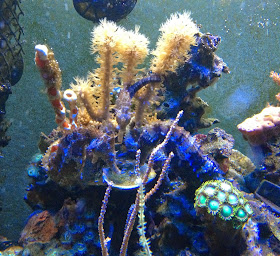Although the measure was signed into law on April 21, 1944 under a provisional government led by Gen. Charles de Gaulle, French women did not actually cast their ballot for the first time until April 29, 1945, in what were the country’s first general elections since it was liberated from German occupation.
News reels from that historic day showed such prominent figures as Irène Joliot-Curie, who won the Nobel Prize for chemistry in 1935, and Gilberte Brossolette, the widow of French Resistance hero Pierre Brossolette, at the polls, sliding their votes into the ballot boxes.
In 1993, only 5.7 percent of seats in France’s Parliament were occupied by women – barely more than that after the end of World War II. The lack of women in politics prompted France to pass a law in 2000 requiring political parties to present an equal number of men and women on voting lists, making it the first country to do so. Still, seventy-three percent of the National Assembly is comprised of men, while the Senate is 78 percent men.
But in the past two weekends that has changed
You could be forgiven for thinking that the French never stop voting. And on Mar. 22 and 29, they were at it again in departmental elections—local votes to elect local councils.
These are an important yardstick for the presidential election to come in 2017. But whatever the outcome of this two-part vote, the results will shake up French politics forever. For the first time, 50% of the seats on local councils will be given to women.
Egalité
As a result of radical reforms set in motion by the socialist government, each canton will elect, not one but two representatives, a man and a woman. They will stand on the same ticket, known as a binôme.
Whatever else happens across the two rounds of voting, France will wake up on Mar. 30 with departmental councils in which women make up 50% of the members. That’s a dramatic shift, since women make up just 14% of the councils now. Each person will vote for a ticket with two names on it, and both will sit in the departmental assembly. To avoid doubling the size of the assemblies, boundaries have been redrawn and the number of cantons halved to roughly 2,050, electing 4,100 councillors.
It is a mixed, dual-member, two-round majority system. A pair will be elected in the first round if they gain an absolute majority and if the votes cast for them constitute 25% of registered voters (not 25% of the votes cast).
If these conditions are not met, there is a second round.
Once all this is over, France will have an elected body of regional representatives—half men and half women. Although the exact responsibilities of the new councils are yet to be set it stone, they are likely to go on to make decisions about the bread and butter issues that keep a local area running. That includes social welfare, school meals— a big issue at the moment—and local infrastructure and cultural projects.
The far-right National Front politician Marine le Pen.
Aside from setting an extraordinary example on equality, these elections will also set the tone for the next race for the presidency.
Whatever happens, France will wake up on Mar. 30 with departmental councils in which women make up 50% of the members.
Anne Hidalgo, mayor of Paris.
Cara - Tuesday























































